
- PORTRAITS (contact sheet and 2 prints)
- STILL LIFE/LIGHT BOX - negatives processed.
- 3+ good, different, unique digital images demonstrating different slow shutter techniques
Capturing movement in images is something that many photographers only think to do when they are photographing sports or other fast moving subjects.
While there is an obvious opportunity in sports photography to emphasize the movement of participants – almost every type of photography can benefit from the emphasis of movement in a shot – even when the movement is very small, slow and/or subtle.
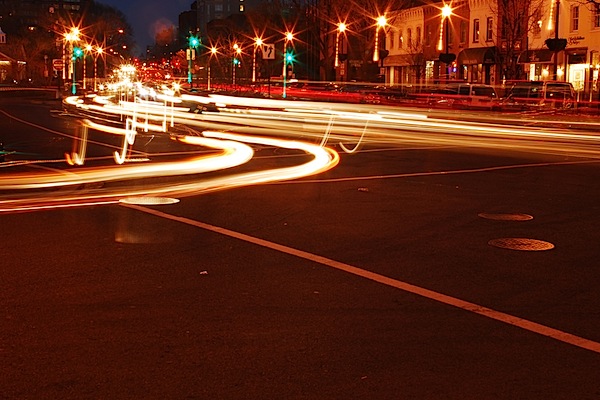
photo by paulaloe
Let’s assume you’re photographing a speeding train against a wall of trees in the background. You can blur the train while leaving the trees in focus. Doing so would instantly communicate to the viewer that the train is moving quickly. To accomplish this, you would use a slow shutter speed. (It’s also important to use a tripod. That way, your camera remains steady.) You’ll often see this technique used in nighttime photographs with car headlights cutting through the image.

Image by Extra Medium
This second technique keeps your photograph’s subject in sharp focus while the background is blurred. Using our train example, the train would be in focus and the wall of trees would be blurred, thereby conveying the train’s movement. Similar to the first method, you need to use a slow shutter speed. However, instead of using a tripod, you’ll be panning your camera along the directional path of your subject.
Panning Explained
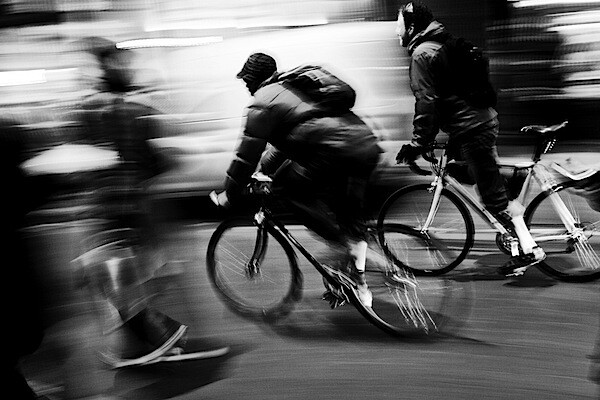
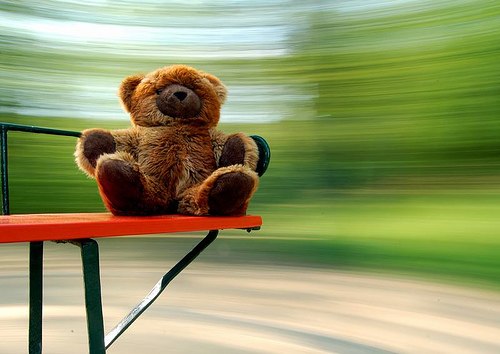 Photo by Mr Bones - No exposure settings supplied
Photo by Mr Bones - No exposure settings supplied
Today, as a followup to our post earlier in the week A Beginners Guide to Capturing Motion in Your Photography I want to post a series of posts from Flickr that all illustrate a variation on the same theme – movement.
The following shots are all of moving subjects where the photographer has made the choice to set their camera to capture the movement as blur rather than freezing it. This is in all cases by choosing (or letting the camera choose) a ’slow’ shutter speed (although by slow you’ll see that the speeds (noted under each image) vary from anything from 1/30 second to up to 40 minutes).
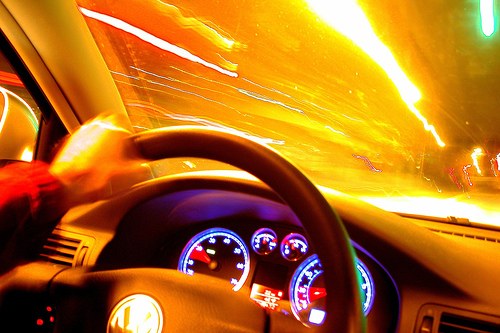 Photo by Ben McLeod – Shutter Speed – 8 seconds
Photo by Ben McLeod – Shutter Speed – 8 seconds
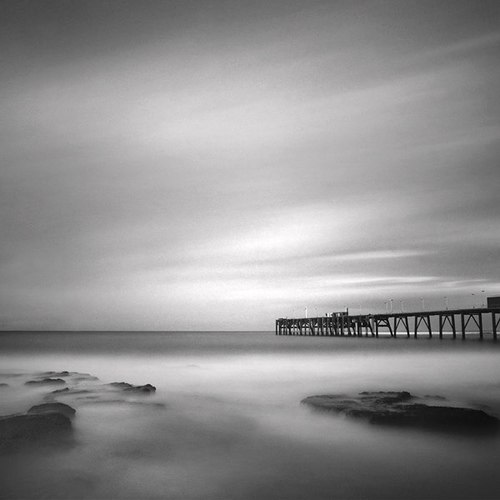 Photo by zane&inzane - Exposure Time – 10 minutes
Photo by zane&inzane - Exposure Time – 10 minutes
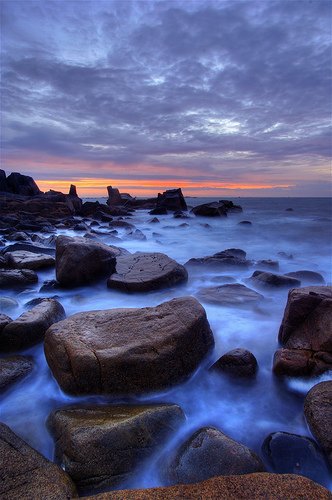 Photo by PhotoToasty – Composition of 3 images at shutter speeds of between 1.6 seconds and 25 seconds
Photo by PhotoToasty – Composition of 3 images at shutter speeds of between 1.6 seconds and 25 seconds
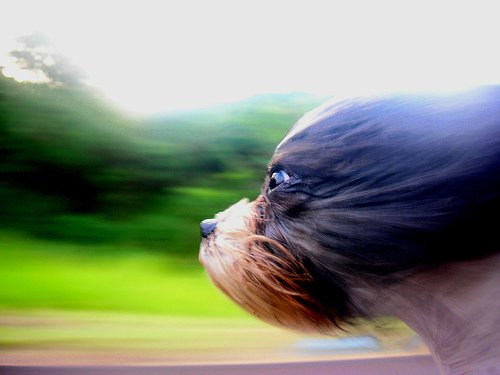 Photo by Amnemona – No exposure settings given
Photo by Amnemona – No exposure settings given
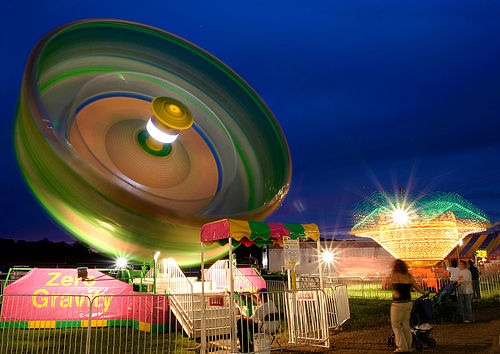 Photo by Sara Heinrichs – Exposure Time: 20 seconds
Photo by Sara Heinrichs – Exposure Time: 20 seconds
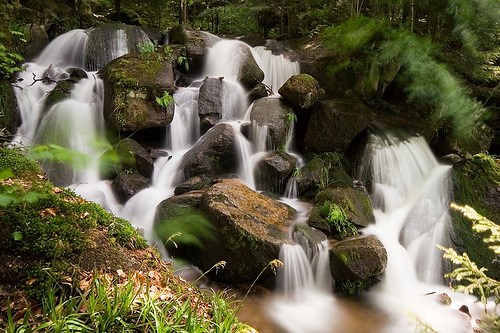 Photo by Mace2000 – 50 second exposure time
Photo by Mace2000 – 50 second exposure time
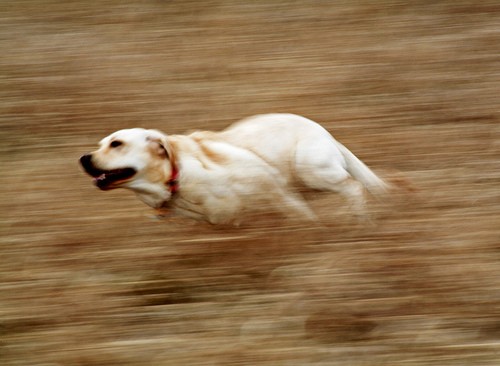 Photo by WisDoc – Shutter Speed – 1/30
Photo by WisDoc – Shutter Speed – 1/30
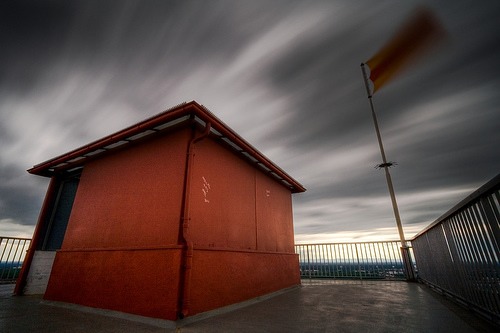 Photo by Mace2000 – Shutter Speed – 50 seconds
Photo by Mace2000 – Shutter Speed – 50 seconds
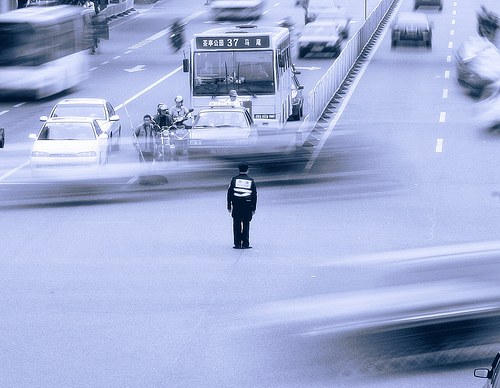 Photo by Wam Mosely – Shutter speed – 4/5 of a second
Photo by Wam Mosely – Shutter speed – 4/5 of a second
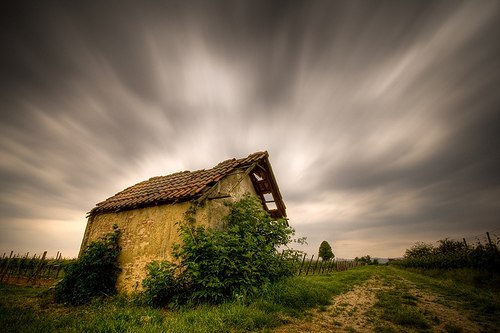 Photo by Mace2000 – Exposure Time – 43 seconds
Photo by Mace2000 – Exposure Time – 43 seconds
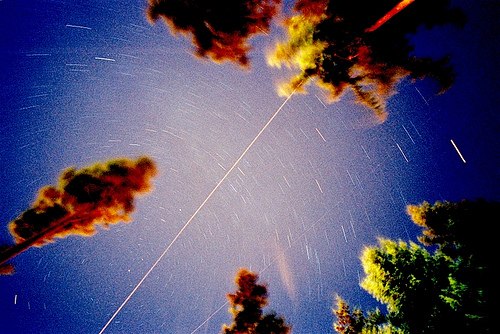 Photo by jon madison – Exposure – photographer estimates somewhere between 30-40 minutes
Photo by jon madison – Exposure – photographer estimates somewhere between 30-40 minutes
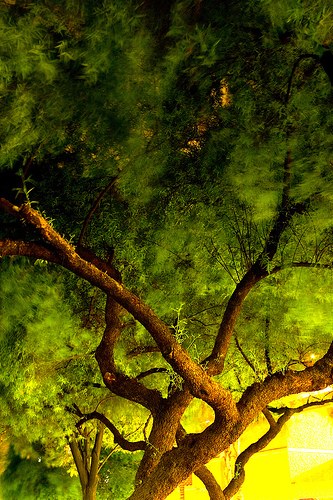 Photo by thorinside – Shutter Speed – 13 seconds
Photo by thorinside – Shutter Speed – 13 seconds
 Photo by tschnitzlein – No Exposure information given
Photo by tschnitzlein – No Exposure information given
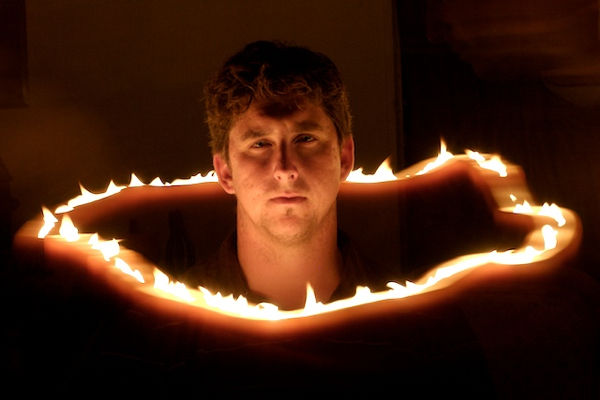
Digital Photography School Forum member Sodaman420 couldn’t have done a better job introducing the technique of Light Painting. His video is posted here. Light is what makes up your photos. Perhaps too often we limit ourselves to the normal diffused lighting we are used to seeing. Locking your camera down on a tripod and setting it for a slow shutter speed allows you to manually get some movement on the lights in your scene. Experiment with flashlights, rope lights, candles or anything handy. In the picture here I had a friend sit perfectly still in a completely dark room. I set the shutter to be roughly the time it would take me to walk around his chair holding a candle (8 seconds). His face was entirely lit by candlelight. Since I was moving too quickly to get in the shot, all you see is the floating flame. I know, it turned out a little demonic, but unintentionally. This is just to get your ideas flowing.
Read more here:| Programmed Auto Mode - Underexposed |
 |
| Fujifilm FinePix E550 7.2mm, Programmed Auto, Pattern Shutter Speed 1/4 sec., Aperture F2.8, ISO 80 |
In the above example, the camera uses the slowest shutter speed and largest aperture available in P mode and at the widest focal length. The picture is underexposed.
| Manual Mode - Overexposed |
 |
| Fujifilm FinePix E550 7.2mm, Manual, Pattern Shutter Speed 3 sec., Aperture F2.8, ISO 80 |
Switching to Manual mode allows me to access the slowest shutter speed available on this camera, 3 sec. while keeping the aperture at F2.8 (the largest aperture available). The effect is immediately better, but it does seem a bit too bright, giving almost a daylight effect. If this is the effect you're after, then you're done. But if you wanted to capture the night mood, read on.
Now it is just a matter of adjusting the shutter speed and/or aperture to obtain the desired exposure. I choose to close down the aperture so as to increase the depth of field also.
| Manual Mode - Correct Exposure |
 |
| Fujifilm FinePix E550 7.2mm, Manual, Pattern Shutter Speed 3 sec., Aperture F4.0, ISO 80 |
Closing down the aperture to F4.0, a more pleasant image is obtained with enough dark areas to indicate it is night time (dusk, really) and enough lighted areas to reproduce what my eyes saw at the outdoors skating rink at the Mississauga Civic Center.
| | A. George Eastman |
| | B. Thomas Edison |
| | C. Joseph Nicéphore Niépce |
| | D. Samuel Morse |
| | A. the Louvre |
| | B. the Bibliothèque Nationale |
| | C. the Metropolitan Museum of Art |
| | D. The University of Texas at Austin |
| | A. Leopold Stokowski |
| | B. Igor Sikorski |
| | C. John Szarkowski |
| | D. Leon Trotsky |
| | A. Hugh Hefner |
| | B. William Mortensen |
| | C. Bunny Yeager |
| | D. Wallace Nutting |
| | A. Gyula Halász |
| | B. George Hoyningen-Huené |
| | C. László Moholy-Nagy |
| | D. They all give pause to even the most photographically literate among us. |
| | A. Madonna |
| | B. Cantinflas |
| | C. Brassaï |
| | D. Pelé |
| | A. call 911 |
| | B. not sell it to you |
| | C. have you taken out the back door |
| | D. sic Georgia on you |
| | A. Charles Lindbergh |
| | B. the Red Baron |
| | C. Nadar |
| | D. Timothy Leary |
| | A. Linked Ring Brotherhood |
| | B. Photo-Secession |
| | C. Rat Pack |
| | D. Association of International Photography Art Dealers, Inc. |
| | A. Rembrandt |
| | B. Piet Mondrian |
| | C. Thomas Eakins |
| | D. John James Audubon |
| | A. Whistler's mother |
| | B. Lee Miller |
| | C. Brenda Lee |
| | D. Taco Bell chihuahua |
| | A. opening their lenses up to f 64 |
| | B. stopping their lenses down to f 64 |
| | C. always using tripods |
| | D. never photographing things that move |
| | A. Fabio | |||||||||||||||||||||||||||||||||||||||||||||||||||||||||||||||||||||||||||||||||||||||||||||||||||||||||||
| | B. Twinka | |||||||||||||||||||||||||||||||||||||||||||||||||||||||||||||||||||||||||||||||||||||||||||||||||||||||||||
| | C. Fabian | |||||||||||||||||||||||||||||||||||||||||||||||||||||||||||||||||||||||||||||||||||||||||||||||||||||||||||
| | D. Liberace
15. The Department of Photography at the Museum of Modern Art was established in
16. Later in his life Ansel Adams used
17. Name the photographic duo.
18. Photographs have a history of mistreatment. For example, some of the glass negatives from the Civil War were used as
19. Which of the photographers below is not known for using multiple negatives in their imagery?
20. People from which organization below were blacklisted during the McCarthy era?
21. Alfred Stieglitz called his cloud photographs
22. Eadweard Muybridge proved with his motion study photographs that
23. Which best describes photography gallery owners?
Here is the last challenge. Match the photographers names on the left with their given names on the right. Clicking the camera icons will show the answers. Answers are below if you don't have java.
|

Short lighting illuminates the part of the face that is not facing directly at the camera. In Figure Z, we can see that the side of the face facing the camera is in the shadow side. Short lighting often is the preferred light positioning for most portraits especially for rounder faces or faces less defined facial features.

Putting the shadow side of the face closer to the camera narrows down the face and works well for majority of subjects except those with long or thin faces.
Broad lighting is the opposite of short lighting where the lit portion of the face faces the front of the camera. Showing the lit portion of the face directly at the camera broadens the face as it illuminates majority of the subject’s face instead of hiding it in the shadows.

While not as popular as short lighting, broad lighting can be used effectively with thinner faces and can make subjects such as the elderly look more radiant and lively. Broad lighting is a “cheerful” light position that portrays openness and excitement.
Here I want to say not a particular light pattern, but somewhat a combination of light patterns with subject's and main light's orientation to the camera. As you noticed, all light patterns were shown for a full face view. When you turn the subject's face to 3/4 view you have two choices to place the main light, which will create different effects. Broad lighting will create an effect of a broad face, because the wider [visible] part of the face, neck and shoulders will be lit and as such more prominent in the photograph. This approach is flattering mostly for slim and thin people, don't use it with heavy people, it will produce the opposite effect.

To achieve this effect you have to place the main light to the opposite side from the direction of the subject's face. So if the subject looks to your left (to the camera's left) - as shown below - you place the main light to your (camera's) right or very close to the camera.

This approach is opposite to the broad lighting and achieves opposite results, it reduces the visible part of the subject's face, neck and shoulders that are lit by the main light. As the result, the heavy people with such approach seem thinner, which creates a flattering effect.

The diagram below shows the main light placement in relation to the camera and the subject. In contrary to the broad lighting the main light is placed in front of the subject's face (butterfly light pattern is often used with this approach. ![End of the article [end of the text]](http://www.romanzolin.com/img/misc/text_end.png)


Let's look at a picture of a friend of mine - Winnie the poo. Looks like Winnie had allot of honey and he is quite chubby. The flash is set up to my right, and Winnie is looking to his left. This make his face look a bit thinner than what they really are. Short light is very useful in portrait photography, as it gives drama to the subject. (Short light setup also stresses skin wrinkles, to create even more drama for older people)

What Is Broad Light?
Broad light is just the opposite of Short light. In the Broad Light setup, THe side that is getting the most light is the side turning towards the camera. This setup is less commonly used for portraits as it tends to make people look chubby. See the diagram for setup.

Lets look at Winnie again. This picture was taken at the same focal length (135mm with 1.5 crop factor D70's sensor). This time Winnie looks very chubby. Oh Winnie! what have you been eating? Also note how the picture looks a bit flatter. There are not allot of light and shade plays.

For both types of light you can use a fill light at the opposite side to the main light, or do as I did and use a reflector at 45 deg. (see diagrams).
Conclusion:
| Light Type | Side to Get Most Light | Chubbiness | Wrinkles |
| Short Light | Away From Camera | Reduce | Intensify |
| Broad Light | Facing Camera | Increase | Reduce |

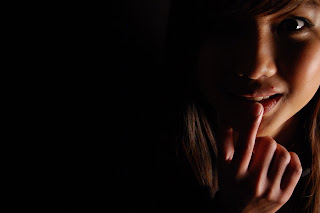


 ve FUN! Shoot for the period in groups of 4 to 6 per light station. Everyone should shoot their own photo session. Take turns as each others subjects. Shoot a minimum of 12 pictures per photographer from 2 locations. .
ve FUN! Shoot for the period in groups of 4 to 6 per light station. Everyone should shoot their own photo session. Take turns as each others subjects. Shoot a minimum of 12 pictures per photographer from 2 locations. .
